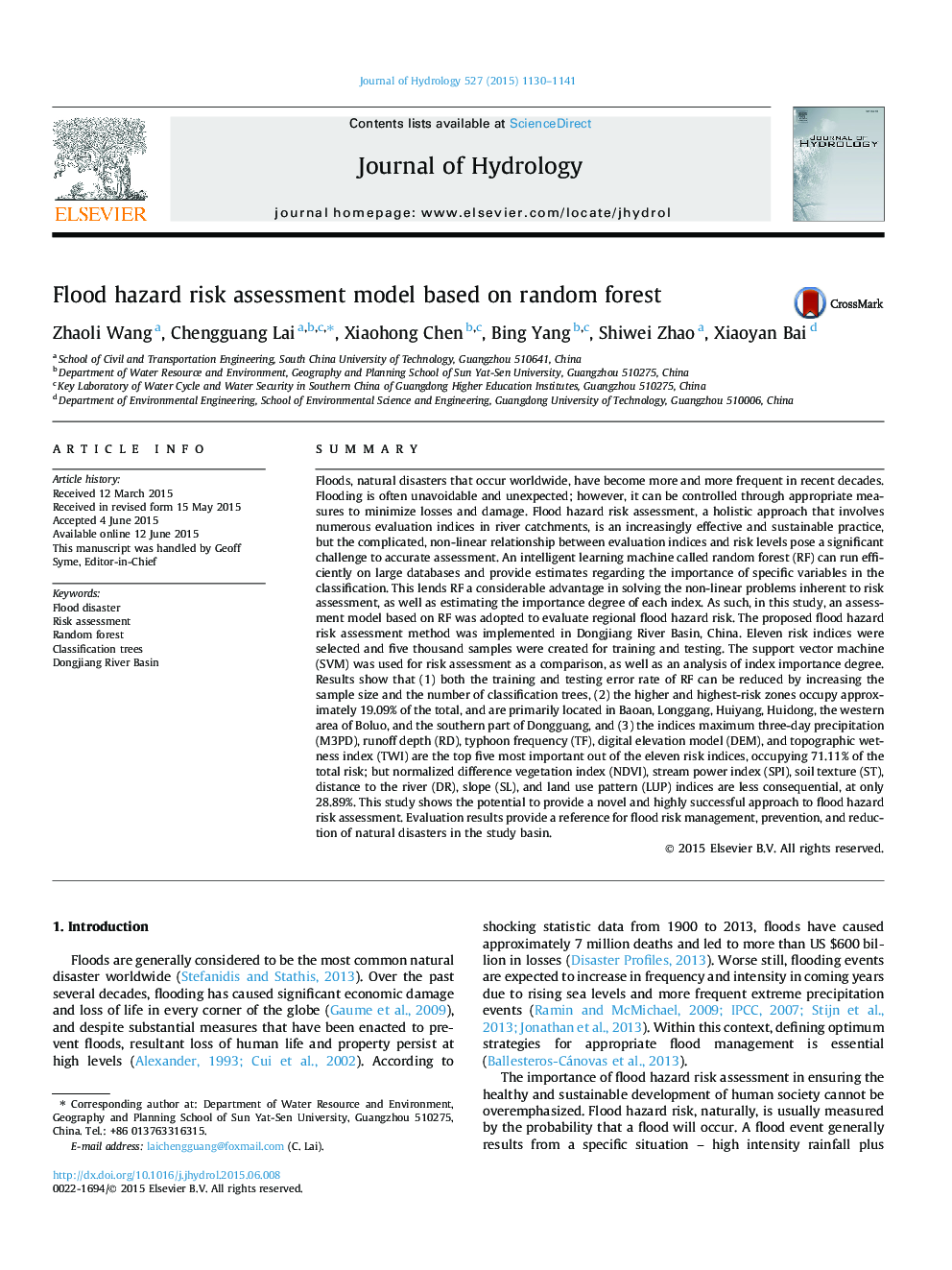| کد مقاله | کد نشریه | سال انتشار | مقاله انگلیسی | نسخه تمام متن |
|---|---|---|---|---|
| 6411253 | 1629923 | 2015 | 12 صفحه PDF | دانلود رایگان |
- A novel approach to flood risk assessment based on random forest (RF).
- The approach can be used to estimate the contribution of each risk index.
- Proposed approach is shown to be effective by a case study.
SummaryFloods, natural disasters that occur worldwide, have become more and more frequent in recent decades. Flooding is often unavoidable and unexpected; however, it can be controlled through appropriate measures to minimize losses and damage. Flood hazard risk assessment, a holistic approach that involves numerous evaluation indices in river catchments, is an increasingly effective and sustainable practice, but the complicated, non-linear relationship between evaluation indices and risk levels pose a significant challenge to accurate assessment. An intelligent learning machine called random forest (RF) can run efficiently on large databases and provide estimates regarding the importance of specific variables in the classification. This lends RF a considerable advantage in solving the non-linear problems inherent to risk assessment, as well as estimating the importance degree of each index. As such, in this study, an assessment model based on RF was adopted to evaluate regional flood hazard risk. The proposed flood hazard risk assessment method was implemented in Dongjiang River Basin, China. Eleven risk indices were selected and five thousand samples were created for training and testing. The support vector machine (SVM) was used for risk assessment as a comparison, as well as an analysis of index importance degree. Results show that (1) both the training and testing error rate of RF can be reduced by increasing the sample size and the number of classification trees, (2) the higher and highest-risk zones occupy approximately 19.09% of the total, and are primarily located in Baoan, Longgang, Huiyang, Huidong, the western area of Boluo, and the southern part of Dongguang, and (3) the indices maximum three-day precipitation (M3PD), runoff depth (RD), typhoon frequency (TF), digital elevation model (DEM), and topographic wetness index (TWI) are the top five most important out of the eleven risk indices, occupying 71.11% of the total risk; but normalized difference vegetation index (NDVI), stream power index (SPI), soil texture (ST), distance to the river (DR), slope (SL), and land use pattern (LUP) indices are less consequential, at only 28.89%. This study shows the potential to provide a novel and highly successful approach to flood hazard risk assessment. Evaluation results provide a reference for flood risk management, prevention, and reduction of natural disasters in the study basin.
Journal: Journal of Hydrology - Volume 527, August 2015, Pages 1130-1141
